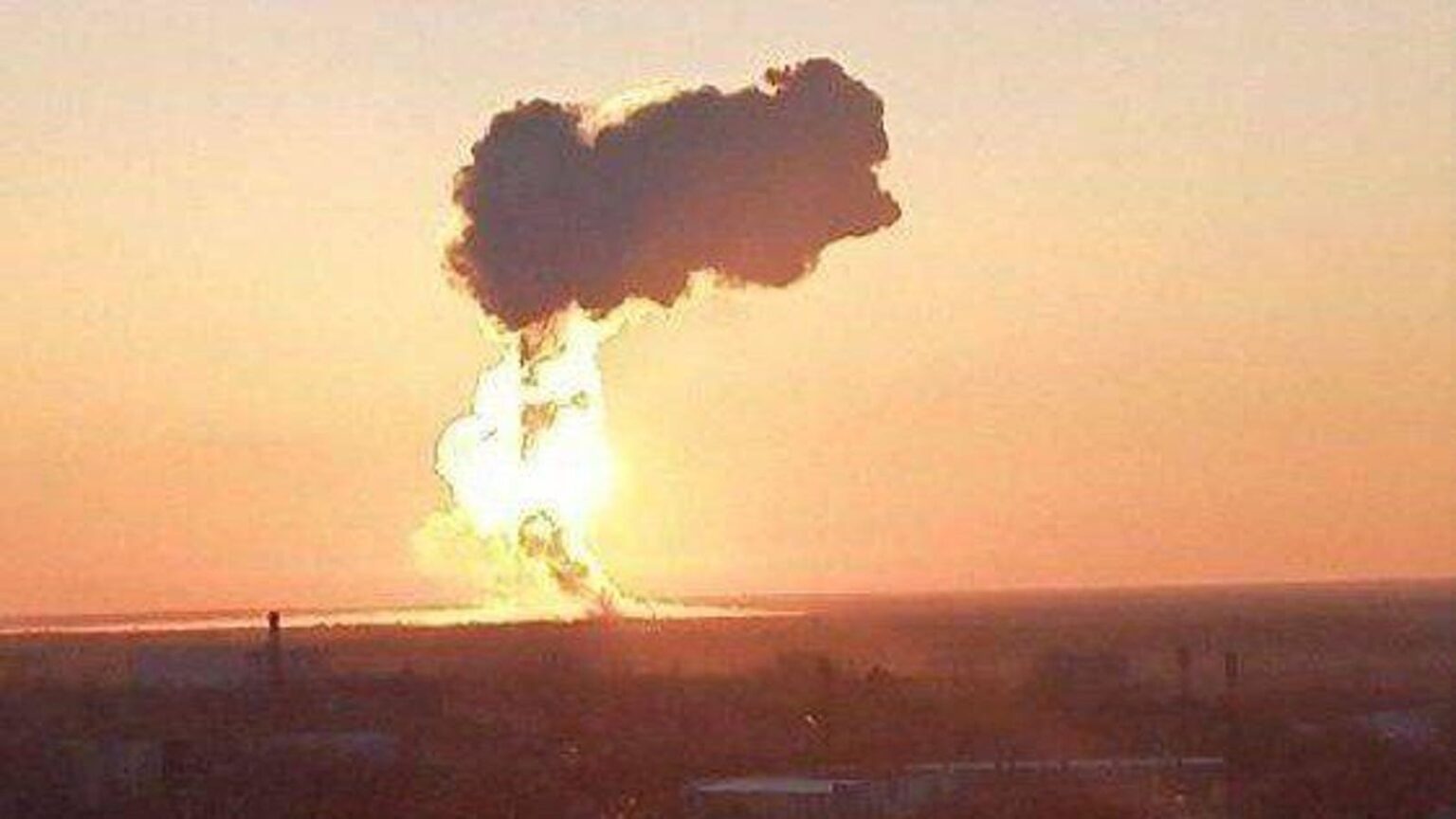The result of a Ukrainian deep strike.
Ukrainian defense ministry photo
On the morning of March 20, Ukrainian drones targeted the Russian air force bomber base at Engels for the third time in 10 weeks. According to the Ukrainian general staff, the resulting blast destroyed 96 Kh-101 cruise missiles—some of Russia’s best munitions for striking Ukrainian cities.
Launched by Tupolev Tu-95 and Tu-160 heavy bombers, each Kh-101 travels as far as 560 miles with a 1,000-pound warhead. The general staff in Kyiv claimed planners in Moscow had designated the targeted Kh-101s for raids on Ukrainian cities this month and next.
Those 96 destroyed missiles accounted for two months of production at the Raduga Design Bureau munitions factory near Moscow. Each Kh-101 costs at least $10 million. That means the strike on Engels may have carried a price tag of $960 million—not counting the additional damage to fuel storage and other facilities at the base.
As explosions rocked the base and smoke billowed into the sky on March 20, Engels was “facing serious difficulties,” the Ukrainian Center for Strategic Communication quipped. Indeed, the difficulties began two months ago.
On Jan. 8, Ukrainian drones flew at least 400 miles to strike in Saratov near Engels. The blasts triggered a blaze at a sprawling depot containing as much as 800,000 tons of fuel. The fire finally burned itself out, or firefighters extinguished it, after six days. Hours later on Jan. 14, drones struck a second time. “There will be no rest for the wicked,” Stratcom warned.
Maybe. In fact, the damage at Engels can be repaired. Raduga might be able to ramp up production of new Kh-101s. And Ukraine may struggle to acquire enough deep-strike munitions to sustain repeated strikes on Engels.
Saratov burns following a Ukrainian deep strike.
Via Supernova
Limited impact
Ukraine has developed a dizzying array of long-range unmanned aerial vehicles, including some based on modified sport planes that can range 800 miles with hundreds of pounds of explosives. It has also developed a 600-mile version of its iconic Neptune cruise missile—and recently deployed it for the first time.
Kyiv has devoted a significant portion of this deep-strike arsenal to attacks on Russian munitions depots such as the one at Engels. But the raids, which often produce towering fireballs that lend themselves to dramatic social media posts, may be more gratifying to the Ukrainians than they are militarily effective.
According to Ukrainian analysis group Frontelligence Insight, more than half of the observed Ukrainian strikes between September and February—many of them aimed at munitions stocks—“had limited impact” as crews rushed to fix the afflicted facilities and Russian industry adapted to compensate for lost production.
Attacking more often, and with heavier munitions than lightweight attack drones, might inflict lasting damage, Frontelligence Insight concluded.
But Ukraine doesn’t get enough of the best foreign-made deep-strike munitions—British-made Storm Shadow cruise missiles, similar French-made SCALP missiles and American-made ATACMS rockets—to mount an intensive campaign targeting Russian logistics. And it doesn’t yet build enough similar munitions, including Neptunes, on its own.
It’s not for no reason that, in recent months, Ukrainian strike planners have shifted their aim—and are now launching more drone attacks on Russia’s delicate, and economically vital, oil infrastructure. They’re hoping the damage to the oil industry will ultimately have greater impact than the damage to weapons depots.
Even if the depot strikes look better on camera.
Read the full article here


